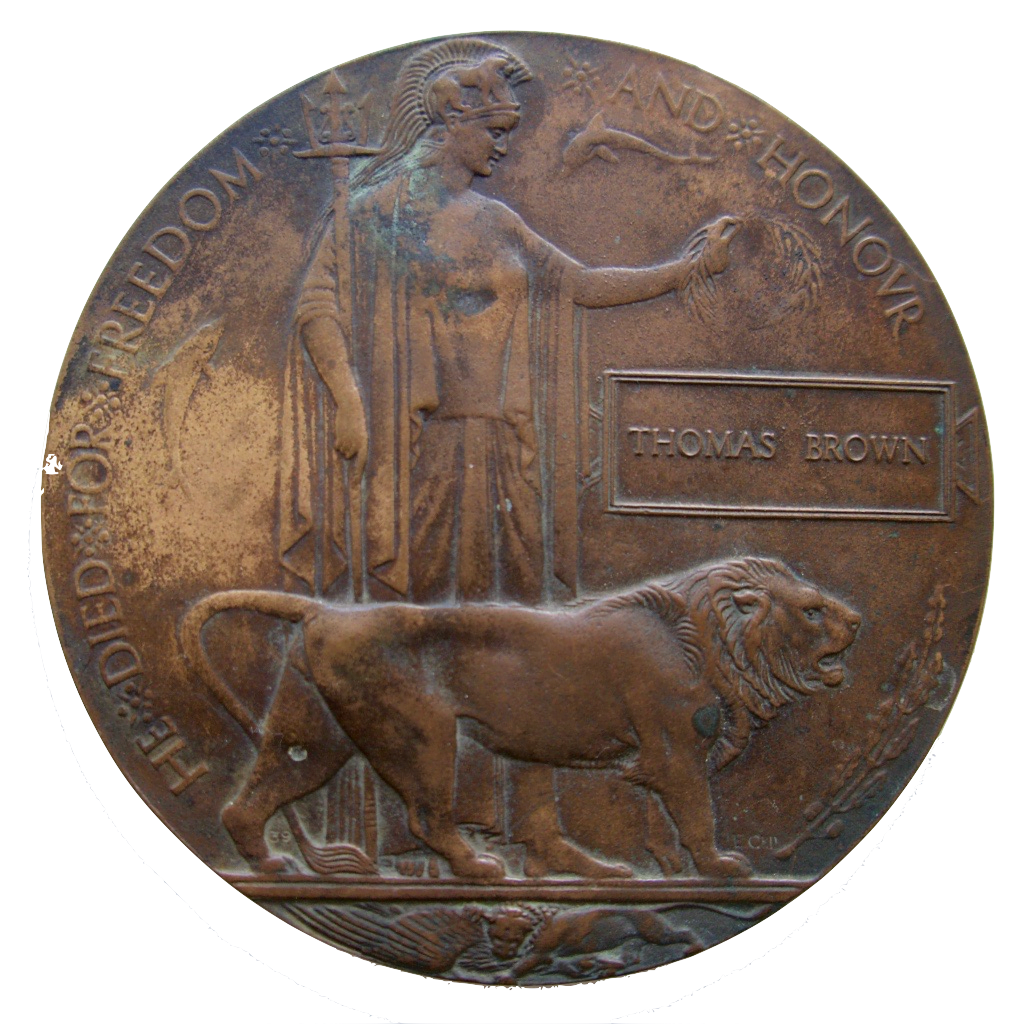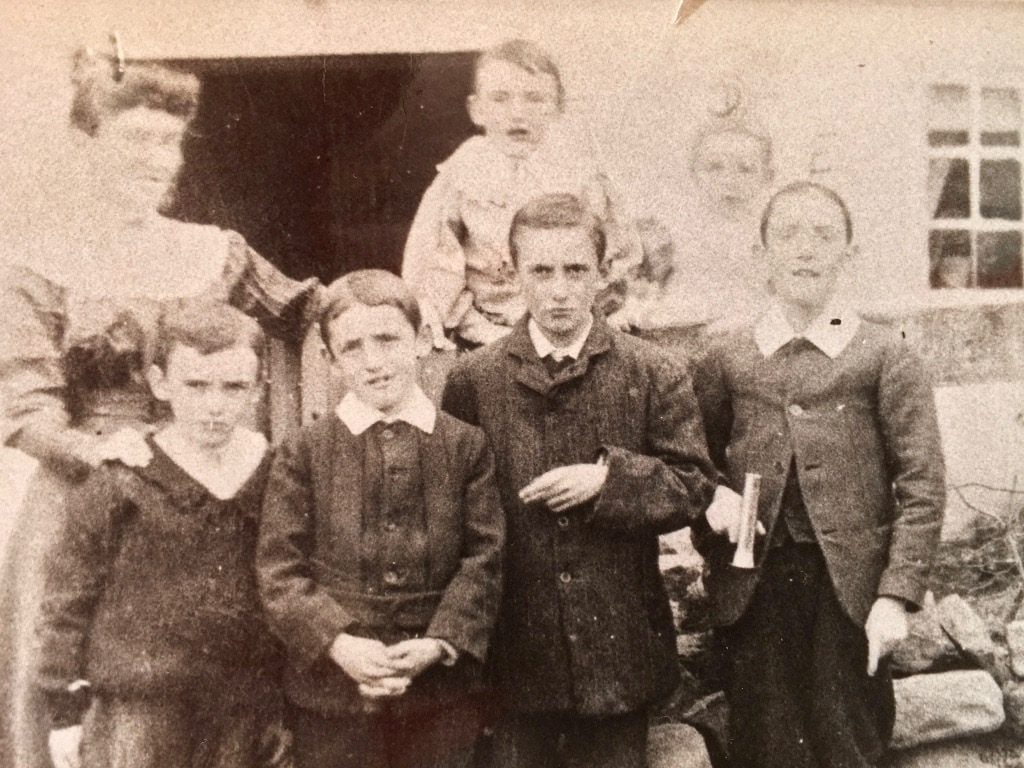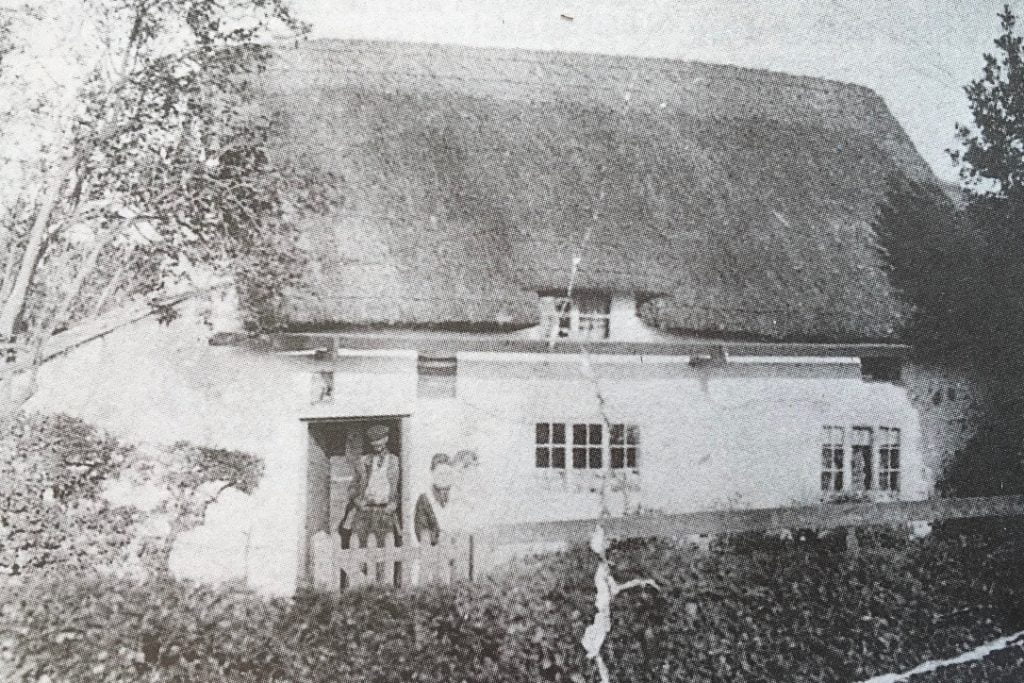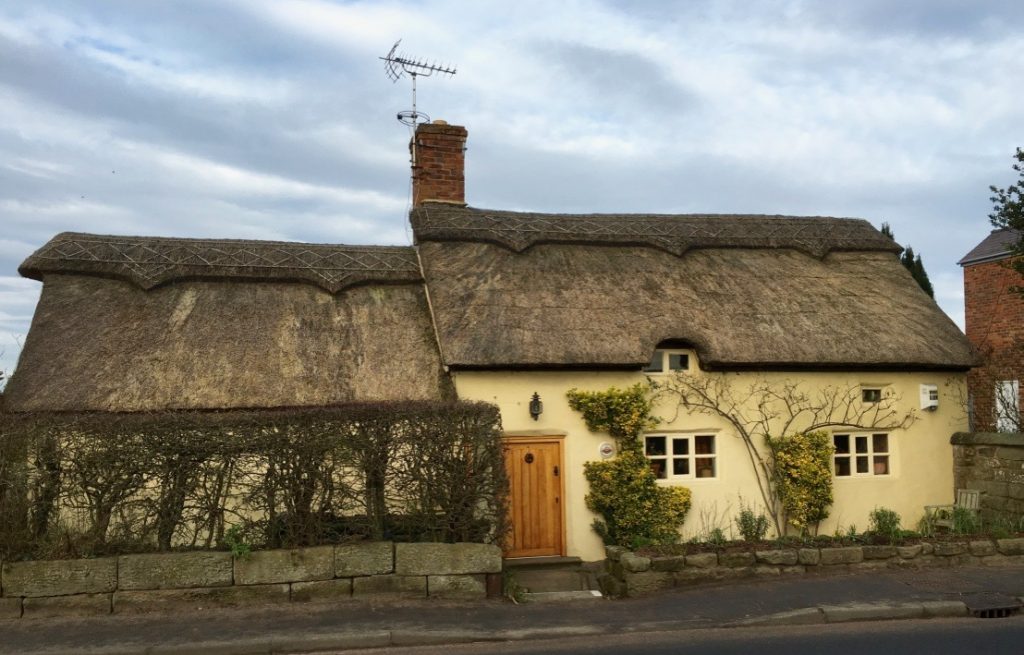James and Clara (nee Dean) were married at Ashton Hayes the 23rd September 1896. James had been born in Birkenhead and worked as a farm labourer: Clara on the other hand was an Ashton girl. In the years that followed they had seven sons.
Name
Ernest
Thomas
Harry
George
Reginald
Horace
Sidney
Year of Birth
c.1897
1898
c.1901
c.1903
c.1905
c.1907
c.1912
Place of Birth
Tarvin
Crewe
Crewe
Ashton
Mouldsworth
Ashton
Ashton?
The 1911 census shows the family as living at Holly Bank Cottage, in Ashton, and although Thomas had apparently been born in Crewe the records indicate that he was baptised at the church in Ashton on 30th October 1898 which suggests that he was probably living in the village at the time.
He was admitted to Ashton Hayes County Primary School in 1904 when he was recorded as ‘born 2 October 1898, son of James Brown’.
Thomas would only have been about 15 when war broke out in 1914 but may have enlisted a few years later but no exact fit for him can be identified in either the military records or newspaper reports. A search of the CWGC records lists a total of 320 men named ‘Thomas Brown’ who died in the 1st World War: sadly none of these can be directly linked to a man connected with Ashton Hayes. For some time there were even doubts as to whether the Thomas Brown identified in the 1911 census was the same Thomas Brown named on the War Memorial. However, the research into Thomas’ history was about to take an unexpected turn.
Having drawn blanks in our research of a man with such a common name, David Case wrote an article for the church newsletter asking whether anyone had any information regarding this man. Malcolm Brown (son of George – b.1903 – and grandson of James and Clara) replied with some amazing new evidence.
When Ernest brown died, Malcolm was asked to dispose of some of his uncle’s furniture. Due to its condition it was decided to consign it to a bonfire. It was only after the bonfire had burnt out that a ‘Memorial Plaque’ (sometimes referred to as a ‘Death Penny’) was found in the ashes.
The recovered ‘Death Penny’ (so called because it was made of bronze and looked like an old penny only much larger) is inscribed with the name THOMAS BROWN and the words HE DIED FOR FREEDOM AND HONOUR.
The plaque must have been passed onto eldest brother Ernest for safe keeping, presumably when his parents died, and had been left in the draw of a cabinet which had been added to the bonfire. Sadly, Thomas’ medals have not been located because these would have provided details of his Regiment: they may have been given to Ernest or gifted to one of the other brothers but their whereabouts are now unknown. Even with the plaque in his hand Malcolm was unsure of who Thomas Brown actually was until the connections described above had been made.
The above picture was supplied by Malcolm Brown (son of George – b.1903) and is both informative and, for a while, confusing. Conveniently, the boys are arranged in descending order of age starting with Ernest (front right) with the two youngest perched behind. Notice that only six of the boys are present in this photograph: Sidney was yet to be born.
The picture was puzzling because Malcolm had only ever known of six Brown brothers – and Thomas was not one of them. He knew that the boy on the right of the front row was his uncle Ernest: he also knew that the left of the front row was his father George. However, Thomas had never been mentioned in family conversations and he had always assumed that the toddler on the back row was his youngest uncle, Sidney. As birth records show that Sidney wasn’t born until 1912 and the toddler appears to be about 2 years old the photograph would have dated from c.1914 if this were true – Ernest would have been 17 years old by then which he clearly isn’t. The conclusion is therefore that the photograph dates from approximately 1909 and the boy second from the right on the front row is Thomas.
The above is another picture of Holly Bank Cottage and the image appears in a book (Ashton Hayes: Glimpses into the story of a Cheshire village) written by Samuel Jackson who was headmaster of the village school in the 1930s and a well known local historian. Malcolm Brown knew of the existence of this picture and has identified the man in the doorway as his grandfather, James. The woman standing in the garden is Malcolm’s grandmother, Clara, and with the date attributed to the picture it is highly likely that the child in her arms is actually Malcolm’s father, George.
Sadly, the book was a limited edition and is now out of print.
[CONTACT_FORM_TO_EMAIL id=”5″]



